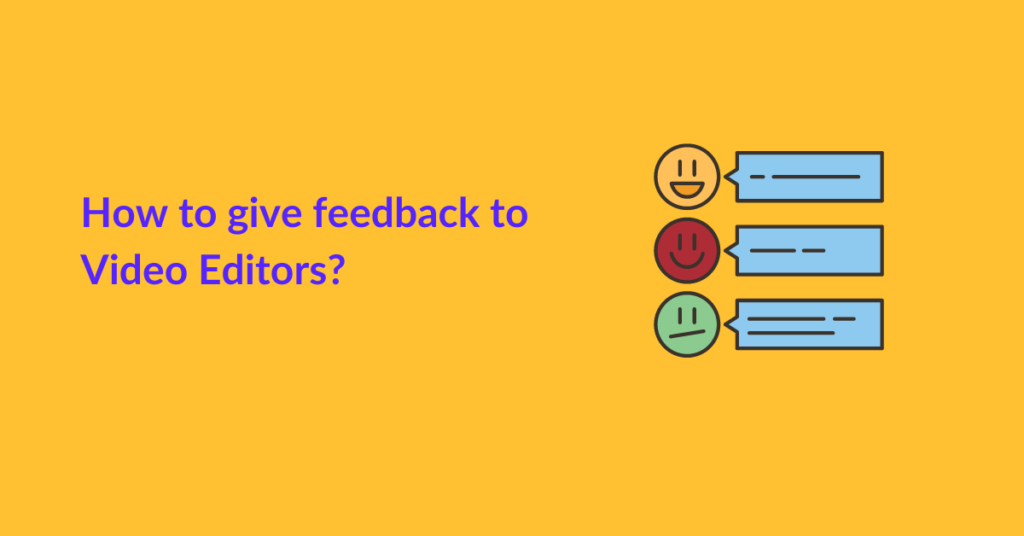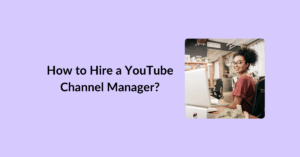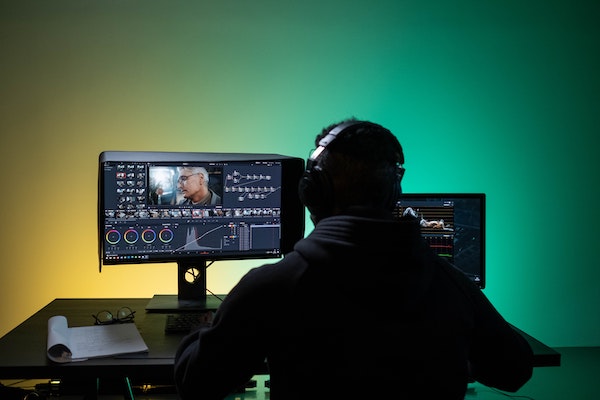You have video content ideas. You filmed the videos. You’ve hired a fantastic video editing team. But you’re still lagging behind your planned content calendar.
Let me guess why. You’re going through the 101st revision of the video that you were supposed to post in the first week of the month?
Or probably stuck in a similar video editing struggle. Isn’t that so? That’s what brought you to this page.
Well, your situation will change by the time you’re done reading this post. For the better.
In our guide about how to give feedback to video editors, we will be sharing:
- What does the video editing industry recognize as video feedback?
- How does video reviewing benefit you?
- 7 Tips for easily communicating your comments and feedback with your video editor.
Let’s get started!
Table of Contents
What is video feedback?
Okay, so before we dive into the details, there’s a difference you need to know.
Video feedback is a term that’s commonly used in the corporate and business industry to refer to a format of feedback for anything at all. It can be feedback for a document, a presentation, a proposal, etc.
You sit in front of a camera and record your feedback instead of giving verbal or written feedback. It can also be in the form of a screen recording.
However, in the video industry, it refers to your feedback about a video that’s filmed or edited by someone. Imagine you record a video and send it to your video editor for editing. He edits the video and sends it back to you. Now, you feel they didn’t understand your instructions very well, and you want them to redo a few clips. You will let them know about it via verbal, written, or visual feedback. All three of these will be known as video feedback.
Why should you provide feedback?
It’s true the market is saturated with online video editors and a variety of video editing teams. But that doesn’t mean you should try one video editor after another if the first one doesn’t meet your criteria.
If you try to make it work like this (I.e., change video editors frequently), you might:
- Waste a lot of money
- Waste a lot of time.
- End up being frustrated & hopeless.
You might even fall behind the rest of your industry fellows as your quality and frequency of videos will be constantly compromised. You need to find one reliable video editor or video editing team and work long enough together that they’re able to understand your needs and sync with your thought process. It will take time.
So, providing feedback is necessary to acquire reliable video editing services for long-term collaboration.
Plus, providing feedback will help you dive deeper into your wants from the video. You’ll develop a better understanding of your exact needs and expectations. It will refine your choices and bring you greater exposure to yourself.
On the video editor’s end, feedback helps video editors improve their skills and their understanding of your thought process. If you give thorough feedback for one video, you won’t see your video editor repeating the same mistake. They will get the hang of your preferences and abide by them.
Summing up, you should provide video feedback to make future processes smoother and more efficient.
How to give feedback to video editors?
At editvideo.io, we ask our clients to leave their feedback in the form of comments. You can narrow down your feedback to each second of the video. Just pause the video, comment what you think, and your dedicated video editor will look into it.
How do we enable our clients to leave such specific frame-to-frame feedback? Well, we furnish all our clients with a robust, easy-to-use tool for this purpose. And there are no extra costs for it. It’s included in your subscribed plan.
We’d love to show you more. Please drop us a message here if you’re interested in checking it out.
With that said, let’s now explore the most efficient strategies and methods used across the industry to leave video feedback.
#1. Refer to the project outline & objectives
We recommend our readers begin their video production process with an outline or brief. A project outline or a brief defines the mood of the video as well as the output you expect.
You should mention everything from the total required length of the video, to the type of music you require, and what should be cut out, filtered, or stylized in the video.
Be as specific as possible. Even if you want to avoid a certain color, mention it in the brief. The same applies to branding assets, sound effects, filter preferences, resolution, timing, and every other thing.
Now, when the editor turns back the edited video, check it against the given outline. If the editor missed out on a particular instruction, simply highlight that in the brief and tell them to make edits accordingly. You can also highlight the time frame (e.g. x seconds to y seconds) during which the changes are required.
Usually, edits regarding the vibe, mood, or feel of the video require a discussion call. If you cannot meet in person, schedule a zoom call. Also, note that this is a strategy for providing your feedback on the video. It doesn’t involve the use of a method or tool.
#2. Set timelines
We promise a 48-hour turnaround time for our clients. Similarly, your respective video editor will promise you a turnaround time too. Make sure this time frame fits well with your content calendar.
When the edited video comes back, and you need further changes, make sure you specify the expected turnaround time. Depending on the nature of the edit, the job may require an hour, two, or perhaps, one day. However, note that tweaks for internet videos do not take any longer than 24 hours.
We ask you to do so because it streamlines the editing process and sets clear expectations. A lot of companies in the video editing industry will offer you unlimited revisions. But when you send the video for revision, you’ll receive the edited version at the company’s convenience.
At times, they offer to edit unlimited videos within one plan. They’ll edit and send the first draft within the first 48-72 hours. However, the revisions that follow may take weeks, meaning you’ll only get one or two videos edited for the monthly plan you subscribed to.
To avoid this, set clear expectations about the time frames for each edit that you request. If you know how to edit videos, you might be able to quote the amount of time required for each edit.
#3. Use a convenient collaboration tool
As mentioned earlier, we use a tool at editvideo.io to make the video feedback process hassle-free for our clients. We recommend the same to you. Here are a few good tools you can use:
- GoVisually
- Frame.io
- Filmstage
- Wipster
- Vimeo
If you want to know about the tool we use, jump on a quick call with us now. We’d be happy to share it with you.
#4. Assess the video from the audience’s perspective
When watching the edited video, a few colors, transitions, soundtrack, or editing effects might not vibe with you. You may feel something just isn’t right.
If that’s the case, we suggest you hold your horses. It’s probably your individual choices and preferences messing up with the final output.
Instead, assess the video from your target audience’s perspective. If you find it difficult to empathize with your target audience, create a post on your LinkedIn or Twitter mentioning the key attributes of your target audience. Also, ask if anyone with these characteristics would like to review a video for you.
If you find one, that’s awesome. Send the video and ask for recorded or written feedback. Do not ask them for technical feedback. Just ask them to jot down whatever they felt upon watching the video.
In case you fail to find anyone online, it’s a good idea to begin a hunt in your vicinity. Search for an individual that matches your target audience persona in your family or friends.
Once you get their feedback, determine if the video has had the desired impact on them. If the video is selling a product/service, are they considering buying? If it talked about your company’s culture, did it develop respect in their hearts or make them want to work with you?
If so, go ahead with the same video!
#5. Use references to correct.
Do you want the outro of your video to be the same as the reel you saw last week? Do you want the video to be as vibrant as the TikTok that got you hooked to the platform?
If that’s so, share the link to this video with your video editor. For specific elements, you should share the following:
- Where is this specific element visible in the shared video? (Quote the time frame)
- Why did you like it?
- How would you like your video to carry it?
- Is there anything you’d like to avoid?
If you liked the overall vibe of the video, share the link and answers to the following:
- What visual element did you like in the video?
- Are the sounds in sync with your needs?
- Do you want your video to clone the ideas used in the reference video?
It’s best to leave a voice message answering these questions if typing the answers is a hassle.
Final Words
Lastly, we recommend keeping a copy of all versions of the video. From the original video to edit one, two, three, etc. Save these versions in a GDrive folder or any other free cloud storage tool. It’ll help you refer to mistakes and improvements easily for future videos.
In case there’s an accident with the newer video, or you lose it, these backups will help you recover. It is also a good idea to keep a record of your feedback. Be it in the form of text or video.
It’ll help your video editor as he or she can refer to it as many times as required. It’ll also serve as a guide and asset to you. You can refer to it at any time in the future to avoid similar mistakes.
We hope by now you have a clear approach to how to give feedback to video editors. If there are any queries or confusion, let us know in the comments below




